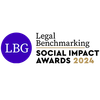Patent searching can be utilised for many different reasons. The reason will depend on the information sought by a particular individual, SME, or large multi-national company and also on what these entities think they will gain from the information returned by the patent search.
However, many businesses are unaware of the benefits of patent searching and how a patent search can help strategically support the business and their intellectual property strategy.
What is a patent search?
A patent search isn’t defined as one process or searching for one thing, but instead, encompasses a number of different searches that can be utilised and leveraged depending on the stage of the entire invention lifecycle. These different searches are outlined later.
Crucially, patent searches aren’t limited to inventions that are created or owned by yourself or your business, but also those held by others, which is what makes the four different kinds of searches invaluable to any business looking to innovate.
Why do you need to have a patent search?
There are many different search patent offerings within the search term parameters. As the different patent searches have different uses, as to are the reasons why you would want to have a patent search completed. Whilst not legally required, patent searching can be an invaluable tool to:
- See who is innovating in your field of expertise
- Keep up to date with your competitors’ patent filings
- Identify any obstacles to your patent application being granted
- Inform of the need to modify an invention to avoid infringement
- Confirm novelty and inventiveness/nonobviousness of an invention
- Protect innovations from unauthorised use by other companies and educate on the IP rights of others
Patent searching can be a very useful tool when it comes to deciding on whether to file a patent application for a particular invention, or to find out more about a competitor’s patent portfolio, or if there is ambiguity surrounding a potential infringement discovery, or for validity reasons.
Different patent searches
The most common type of patent searches can be classified into 4 search groups. These include:
- Landscape Search
- Freedom to Operate
- Patentability Search
- Validity/Invalidity
Landscape Search
Landscape searching is, in essence, a competitive intelligence search that can help inform how to proceed in the pre-patent process. Landscape searches can also help identify other innovators in a particular field and the saturation of patents filed and granted in the area.
This is a broad search and is a common request for businesses who want to assess the patent landscape and are perhaps looking to develop a new technology and want to see what the patent landscape is before embarking on expensive R&D.
Landscape searches may be requested by a company if they are looking to enter into a new field of technology and want to know what the patent situation is for that particular technology area, and the patent analytics of how many patents have been filed and been granted. They can also be used to understand where there are gaps in innovation, and where investment would be prudent.
Additionally, landscape searches can also be carried out to find a business partner and initiate collaboration for a person or company’s invention.
The landscape search can be performed for a given country, region or globally, depending on the needs and opportunities in different jurisdictions.
Freedom to Operate Search
Freedom to Operate (FTO), otherwise known as Infringement, Clearance or Right-to-Use searches, is an extension of the landscape search. These are more specific in comparison to a landscape search and are often chosen by companies who may be already established in a particular country jurisdiction, say the UK, and want to enter, say, the US market, or maybe want to enter a more specific type of technological area of the market within their current jurisdiction and want to identify potential obstacles to the free use of their invention within these jurisdictions of interest
An FTO search will provide the necessary information to determine whether entering a new market with a particular technological product or process is a feasible option. As the name suggests, this search is assessing whether a company can operate in a particular marketplace freely without potentially infringing on a competitor’s patent.
Freedom to Operate searches can be used to search for the ability to use a patent owned by another party, as part of your invention.
Spending a little on a landscape or FTO search at the beginning of a project is a valuable asset to a company as it can result in massive savings to the company in the long term, i.e. not wasting money on expensive R&D for ultimately a product the company can’t sell.
Patentability Search
Patentability, or Novelty, searches are often used by companies who have an invention, such as a product or process, which they think may be inventive and are looking to see if it is worth protecting such product or process.
These searches are a crucial part of the filing process to ensure that your innovation is indeed inventive and that there is no prior art that may interfere with your ability to have your patent granted.
Patentability searches are similar to the searches performed by the patent offices and look for patents, patent applications, documents, articles, web links, etc, which may disclose all or parts of the invention in order to assess if the invention meets the patentability requirements that are needed to obtain patent protection.
The main patentability requirements that analysed for the search are novelty, i.e is the invention new and not fully disclosed elsewhere, and inventiveness/no obviousness , i.e. is the invention not an obvious modification of something already available in the public domain.
A patentability search may be useful to a company that is unsure if its invention is patentable and does not want to spend money unnecessarily on the preparation of a patent application and paying the required patent office for filing a patent application.
Additionally, a patentability search can help avoid challenges with the patent office further down the road if further information needs to be added once a patent has already been filed. The patentability search allows the patent drafter to write a more effective patent application since they would be able to address the inventions already known to the public and better distinguish the new invention before filing the patent application.
Validity or Invalidity Search
The final search is a validity or invalidity search. As the name suggests, the search allows a company to check whether a patent is likely valid or invalid depending on their position and request.
Like the patentability search, the validity or invalidity search is searching for documents (i.e, patents and non-patent literature) which prove or disprove whether a patent meets the patentability requirements, i.e. novel and inventive, as outlined above, and can be searched for either pre or post-application.
An example may be that a company thinks their competitor’s patent is invalid. Before challenging such a competitor, the company wants to make sure they have the necessary prior art documents to challenge the validity of the claims of the competitor’s patent. Therefore, the invalidity search will provide the necessary documents and references to either confirm or refute the invalidity challenge.
Patent Monitoring
Whilst not a search itself, many IP service providers, like Murgitroyd, provide “Watch Services” that provide regular updates to clients when relevant patents are granted, or even when they’re filed - either by technology and or company. Competitor and patent watch services can help companies to stay abreast of the innovations in their area of expertise and can help to inform strategy and investment.
Can I do a patent search myself?
Anyone can do a patent search; however, patent searches take many hours and aren’t just a skill; they’re an art in themselves. From knowing all relevant keywords that may relate to your or others’ patents to understanding patent classifications, patent searches are intricate and nuanced.
Specialist Patent Searching
Whilst you may decide to do a preliminary patent search yourself, we would always recommend that you engage with patent search specialists to complete a comprehensive search for your innovation. Forging ahead without the right information to hand can mean a lengthy and expensive patent application process.
Murgitroyd has a dedicated search team providing patent searches covering all of the aforementioned search groups and more. Our patent searching can be tailored to the client’s needs, and as such, each search project will be unique to the client.
All searches are completed through a variety of means, including but not limited to; international databases, web searches, advertisements and product catalogues, in the jurisdictions where a company would like to file a patent.
The Murgitroyd search team is managed by Patent Attorneys, with the team being made up of scientists and engineers who have a STEM background, some of which have PhDs and/or Master's degrees. Therefore, the multi-discipline team is well-placed to fully understand the technical areas of each client’s request and their searching needs, resulting in high quality search reports.
If you would like to find out more about what our patent search team can do for you, please don’t hesitate to get in contact.



















